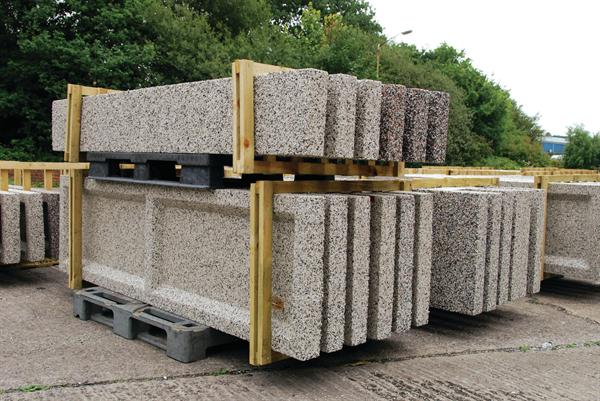By John Caulfield

Every year, trillions of tons of plastic-made products—the bulk of which is shopping bags, obsolete electronics, and empty water bottles—get dumped into landfills worldwide. So far, recycling efforts have made barely a dent in this waste pile. But that might change if recycled plastic were to emerge as a core structural component for new-home construction.
To those builders and suppliers who say “don’t hold your breath,” one academic who has spent his career working with recycled plastic responds confidently that this evolution is coming. Dr. Tom Nosker of Rutgers University invented a structural composite material made from 100 percent recycled plastic that Axion International now uses to make railroad ties and bridges. Nosker predicts it is “very likely” that recycled plastics will be used more widely to build homes.
“It’s only a matter of time,” he tells Builder. “Recycled polyethylene has great mechanical properties and is strong as hell. But it’s all going to be about politics.” He notes that some countries already ban wood from being used in structures. With Canada exporting more lumber to China than it does to the U.S., the availability and price of wood for construction becomes less predictable. And plastics should get cheaper as the gap between oil and natural gas prices closes.
Indeed, the media have given recent attempts to use recycled plastic as a structural component in home building widespread publicity. A case in point was the opening in Haiti recently of a manufacturing plant devoted to mass-producing bales of compacted recycled plastic bound by wire. The process was developed by Texas-based Ubuntu-Blox, which in June completed a house in Haiti made from about 600 bales.
Wales-based R&D firm Affresol is into the fifth stage of developing its synthetic concrete product Thermo Poly Rock (TPR), whose content is 70 percent recycled plastic. Ian McPherson, Affresol’s managing director, says his company plans to roll out 400 house frames made from TPR next year.
Affresol’s process mixes granulated plastic waste with a mineral/resin compound. The finished product—which pours like concrete and dries in 2½ hours—is produced for about 12 percent less than standard bricks or blocks, and doesn’t have anywhere near the carbon footprint of composites made from plastics melted at high temperatures.
McPherson sees the U.S. becoming “one of the biggest market opportunities for us” because, he believes, TPR can deliver the benefits of wood framing (i.e., quick construction), and the durability of brick and block. “Our product doesn’t replace concrete; it’s a sustainable alternative,” he says.
